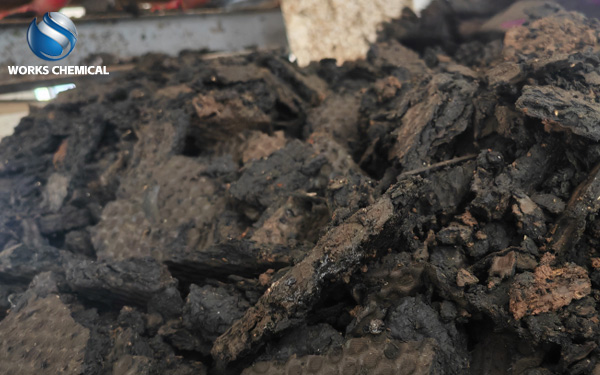
In the municipal sewage treatment system, sludge dewatering is a key link connecting sewage treatment and resource utilization disposal. Sludge conditioner, as the "catalyst" in this process, is not only of great significance at the technical level, but also profoundly influences the economic benefits, environmental benefits and sustainable development capacity of sewage treatment plants. The following analyzes the core value of sludge conditioner in municipal sludge treatment from three major dimensions: technical necessity, economy and environmental protection.

I. Technical Necessity: Breaking the "Dewatering Dilemma" of Municipal Sludge
Municipal sludge has the following characteristics, which directly lead to extremely high difficulty in dewatering:
High moisture content: The moisture content of fresh sludge is usually over 99%, and it is in a flowing state. Direct dewatering requires a large amount of energy.
The colloid structure is stable: The surface of sludge particles is negatively charged, forming a stable colloid system, and the repulsive force hinders flocculation.
High proportion of bound water: The proportion of bound water in microbial cells exceeds 70%, making it difficult for traditional mechanical pressure to release.
The core function of sludge conditioner:
Disrupting colloid stability: Destabilizing sludge particles through charge neutralization (such as cationic PAM) to form large particle flocs.
Release of bound water: Surfactants penetrate the cell wall and release intracellular water; Inorganic framework materials (such as modified diatomite in sludge enhancers) are used to construct the water filtration channels.
Improving dewatering efficiency: After conditioning, the specific resistance (SRF) of the sludge can be reduced by 60% to 80%, and the plate and frame filter press cycle can be shortened by more than 50%.
Ii. Economy: From "Cost Center" to "Benefit Engine"
The economic value of sludge conditioner is reflected in the cost optimization throughout the entire life cycle:
Reduce the cost of pharmaceuticals
Compound conditioning agents (such as sludge enhancers) can reduce their dosage through synergistic effects, with the dosage dropping to 50%-70% of that of traditional agents.
Avoid the increase in COD of the filtrate caused by excessive addition and reduce the cost of subsequent biochemical treatment.
Energy conservation
The improvement of dehydration efficiency reduces the energy consumption of belt filter presses or centrifuges by 20% to 30%.
The calorific value of sludge can be enhanced (for instance, sludge enhancers can increase the calorific value by 15%), and the consumption of auxiliary fuel during incineration can be reduced.
Reduce disposal costs:
Reduce the sludge volume by 30% to 40%, lowering transportation and landfill costs.
After conditioning, the sludge is more likely to be recycled (such as for brick-making and incineration for power generation), generating additional income.
Case data: After a 100,000-ton-per-day sewage treatment plant adopted sludge efficiency enhancers, the annual chemical cost was reduced by 1.2 million yuan, the sludge disposal fee was lowered by 1.8 million yuan, and the comprehensive benefits increased by over 3 million yuan.
Iii. Environmental Friendliness: From "End-of-pipe Treatment" to "Green Closed Loop"
Reduce secondary pollution
The conditioner can solidify heavy metals (for example, the solidification rate of Cd and Pb by the sludge enhancer can reach 95%), reducing the environmental risk of sludge.
Avoid the excessively high pH value caused by traditional chemicals (such as lime) to protect the subsequent biochemical system.
Contribute to carbon emission reduction
The reduction of energy consumption for dehydration directly decreases CO₂ emissions.
The resource utilization of sludge (such as replacing coal combustion) can reduce carbon emissions by approximately 0.5 tons per ton of dry sludge annually.
Compliance guarantee
The conditioned sludge meets standards such as "Sludge Quality for Mixed Landfill in Sludge Disposal of Municipal Sewage Treatment Plants" (GB/T 23485), avoiding environmental protection penalties.
Iv. Strategic Significance: Promoting the "Quality Improvement and Efficiency Enhancement" of Sewage Treatment Plants
In response to upgrading and transformation: As the effluent standards become stricter (such as quasi-Class IV), the sludge production increases, and efficient conditioning agents have become the key to ensuring the stable operation of the system.
Achieving the goal of resource utilization: The conditioner enhances the calorific value and flammability of sludge, providing a foundation for sludge incineration power generation and co-processing.
Adapting to low-carbon transformation: Under the "dual carbon" goals, low-energy consumption and low-chemical consumption conditioners have become the preferred choice for the green upgrade of sewage treatment plants.
Conclusion: Sludge Conditioner - The "Invisible Lever" for Municipal Sludge Treatment The value of sludge conditioner far exceeds its physical form. It is the core tool for municipal sewage treatment plants to achieve cost reduction, efficiency improvement and emission reduction. Choosing innovative products such as sludge enhancers can not only solve the current dewatering problem but also inject "chemical energy" into the sustainable development of sewage treatment plants. In the future, with technological iteration and policy-driven approaches, sludge conditioning agents will be upgraded from "auxiliary chemicals" to core components of "systematic solutions", leading municipal sludge treatment towards a deep transformation towards resource utilization and low-carbonization.